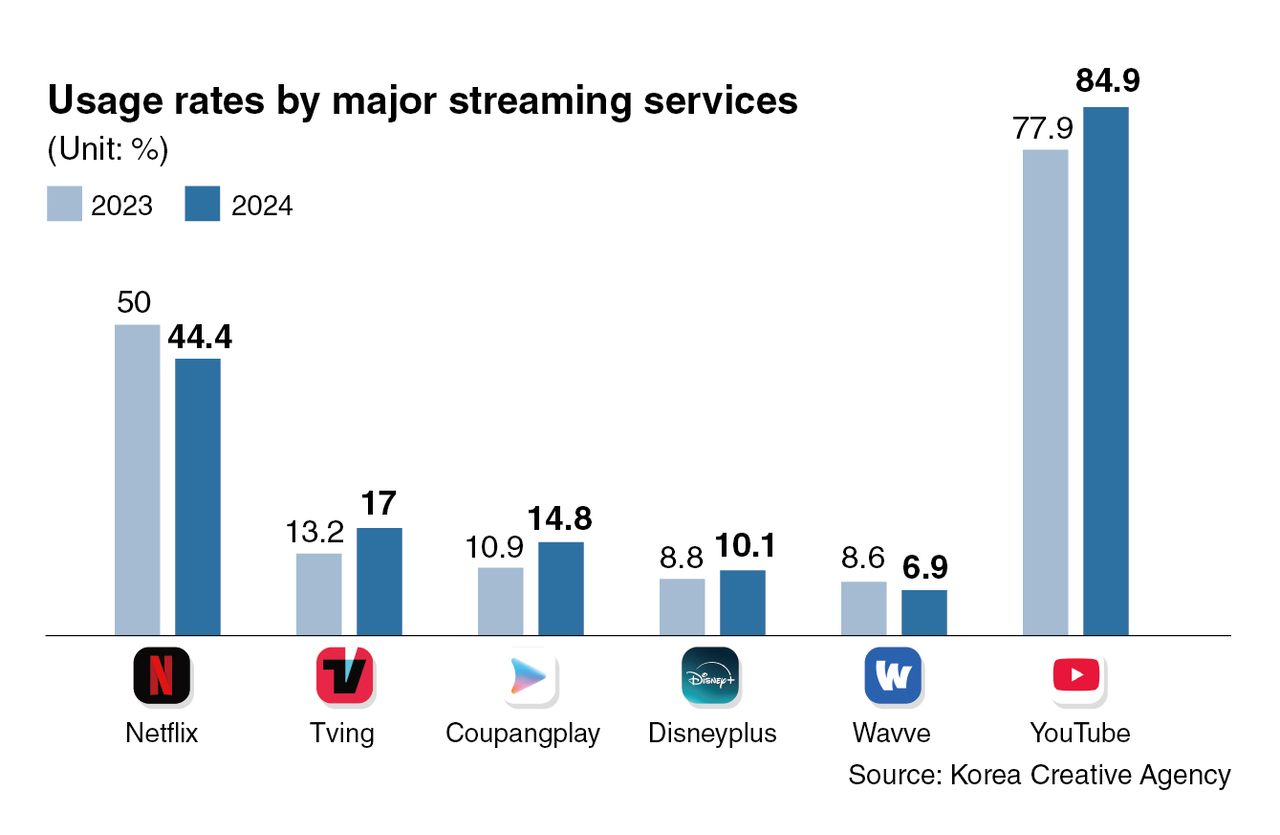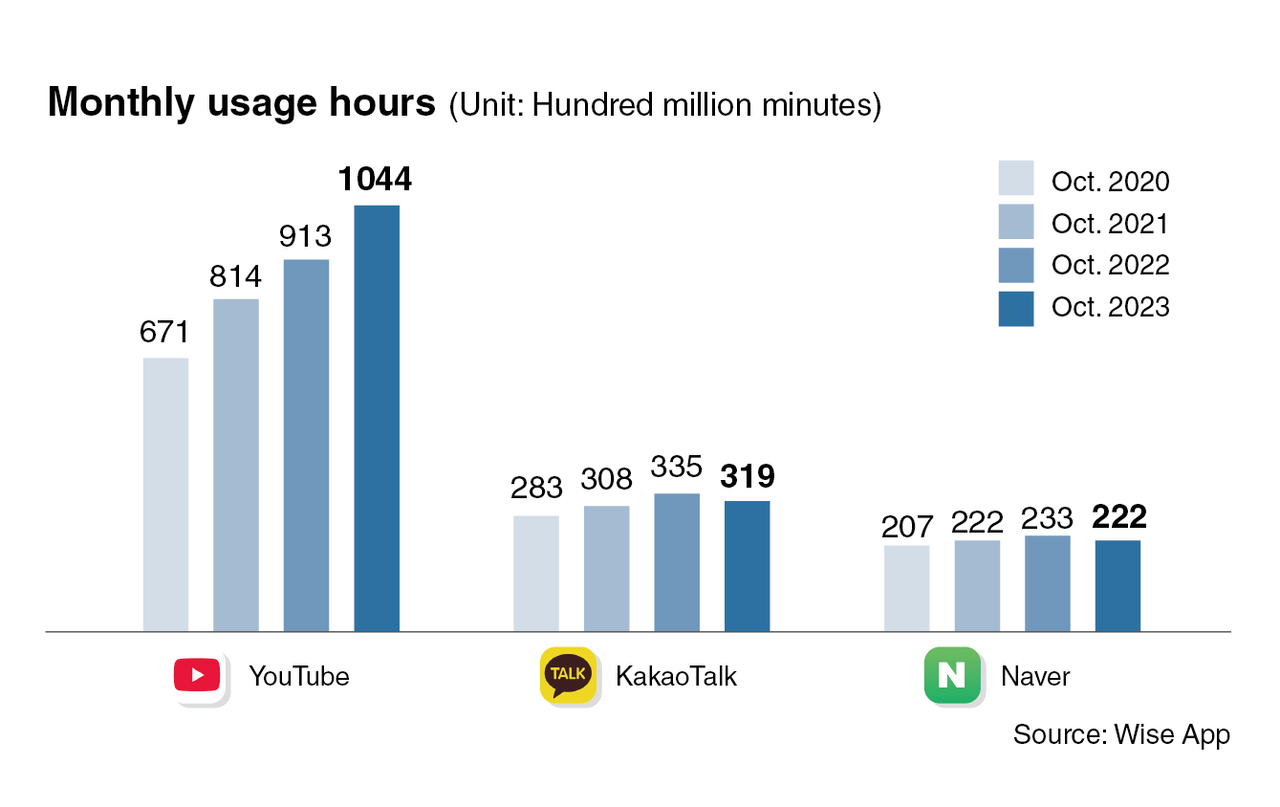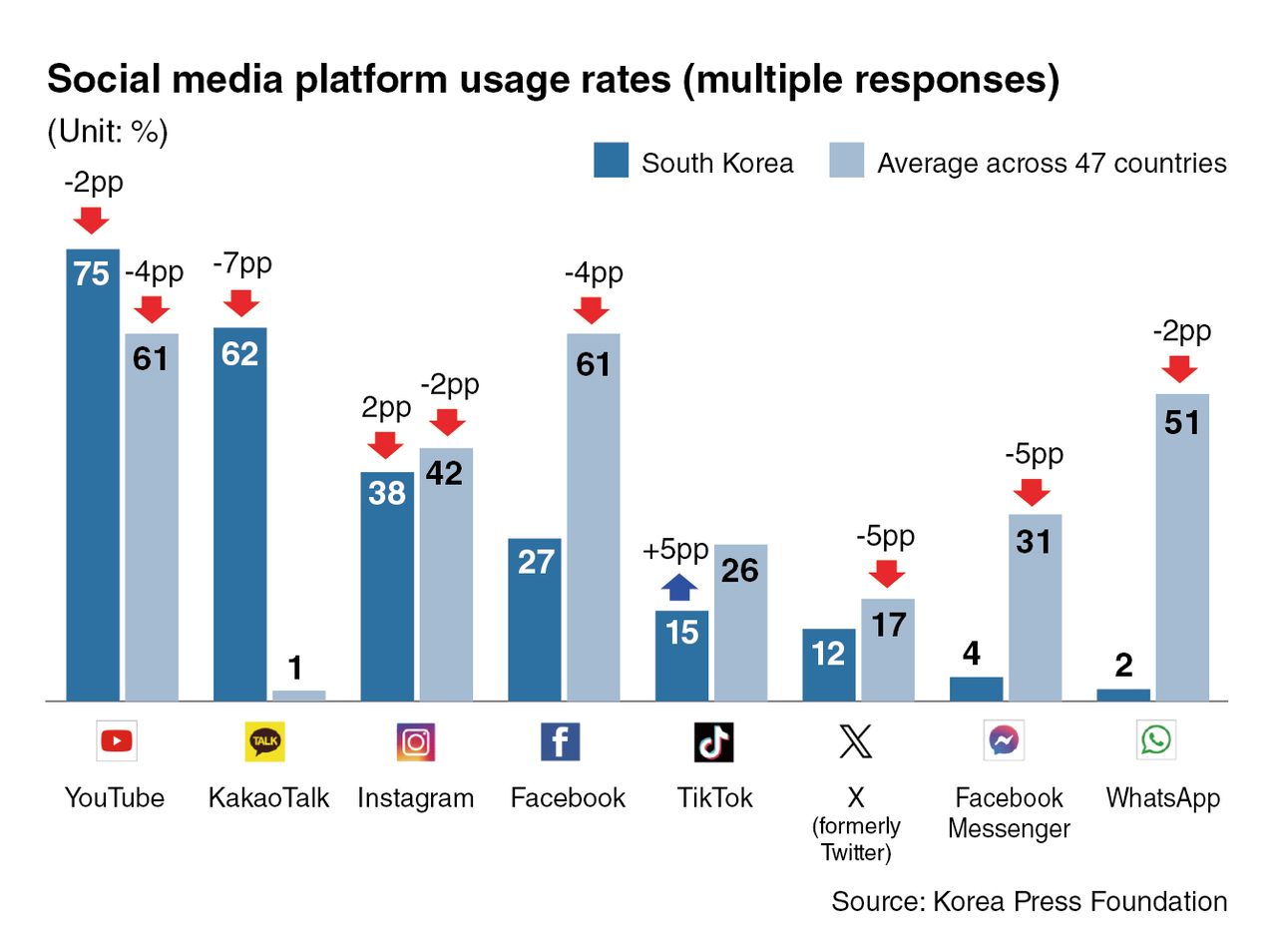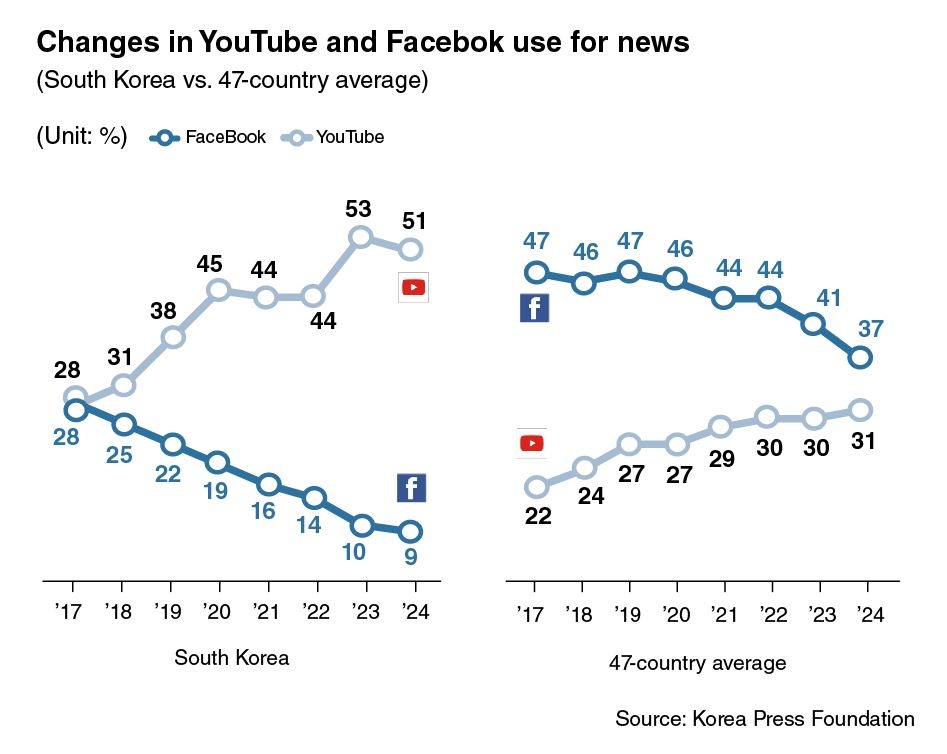May 5, 2025
SEOUL – When YouTube launched its Korean-language service on Jan. 23, 2008, it entered a nation ready to embrace it — and be transformed.
Seventeen years later, South Korea has become one of the most YouTube-centric societies in the world, using the platform not just for entertainment, but to wage political battles, reshape pop culture, and redefine the public square.

In 2024, YouTube captured 84.9 percent of South Korea’s OTT users — far outpacing Netflix’s 44.4 percent and all other paid competitors, according to a 2024 government-backed nationwide survey. SOURCE: KOREA CREATIVE CONTENT AGENCY; GRAPHICS: THE KOREA HERALD
Now, as YouTube marks its 20th anniversary globally, the scale of its influence in South Korea is almost unmatched. According to a 2024 government report surveying more than 5,000 South Koreans, a staggering 84.9 percent of people who use streaming platforms access YouTube — higher than any other service, paid or free. By comparison, Netflix’s usage rate stands at just 44.4 percent.
But this is about more than entertainment. YouTube has become the dominant stage for news, activism, disinformation and cultural exports, reshaping Korea’s digital life more profoundly than perhaps any other platform.

South Koreans spent a total of 1.04 billion hours on YouTube in October 2023 alone — more than triple the time spent on KakaoTalk (319 million hours) and nearly five times that of Naver (222 million hours), according to a local mobile analytics service Wise App. SOURCE: WISE APP; GRAPHICS: THE KOREA HERALD
In South Korea, YouTube isn’t merely another app — it’s almost the whole platform. By February of this year, Koreans spent more time on YouTube than on any other smartphone application, clocking 139 minutes a day on average, nearly 10 percent of their waking hours, according to local mobile market research platform Mobile Index.
Popular domestic apps like Naver and KakaoTalk trail far behind, with users spending about 30 minutes and 25 minutes daily on them, respectively.

According to a 2024 international survey by the Korea Press Foundation and Reuters Institute, 75 percent (far left) of South Koreans used YouTube for social media consumption — 14 percentage points higher than the 47-country average of 61 percent, which included markets such as the US, UK, Germany, Japan and Brazil. PHOTO: KOREA PRESS FOUNDATION; GRAPHICS: THE KOREA HERALD
For news consumption, YouTube’s role is even more striking. According to the Digital News Report 2024 by the Korea Press Foundation, in a joint international effort with Oxford’s Reuters Institute, 51 percent of South Koreans said they use YouTube as a news source — the highest percentage among 47 countries surveyed, and far above the global average of 31 percent.

Between 2017 and 2024, YouTube’s share of news consumption in South Korea (left) nearly doubled to 51 percent, overtaking Facebook, which fell to just 9 percent, according to the Korea Press Foundation survey across 47 countries. In contrast, globally (right), Facebook continues to lead YouTube in news usage by a 6-point margin. PHOTO: KOREA PRESS FOUNDATION; GRAPHICS: THE KOREA HERALD
According to the report, YouTube’s personalized algorithms allow users to stay in ideological bubbles, reinforcing political biases and accelerating polarization.
This dynamic exploded into full view during South Korea’s unprecedented constitutional crisis in late 2024, when former president Yoon Suk Yeol was impeached for illegally declaring martial law. As mass protests swept the country, YouTube channels — both conservative and progressive — became primary sources of real-time updates, rallying cries, and, in many cases, extreme rhetoric.
At the height of the unrest, during the Jan. 19 riot at Seoul Western District Court, YouTubers were seen livestreaming violent clashes with police as Yoon’s supporters stormed the courthouse. Former president Yoon himself openly acknowledged his supporters’ efforts, telling a crowd gathered outside his residence, “I have been watching your actions live through YouTube broadcasts.”
If politics showed YouTube’s power to divide, pop culture had already been showing its power to unite — and export. The turning point came in 2012, when Psy’s “Gangnam Style” became the first YouTube video to reach one billion views. Today, the video has surpassed 5.5 billion views — equivalent to two-thirds of the world’s population having seen it at least once.
Psy himself recently said, “YouTube changed the landscape of the Korean Wave. ‘Gangnam Style’ was the first proof that Korean music could explode globally overnight.”
The impact was immediate and lasting. K-pop groups like BTS and Blackpink mastered YouTube as a global marketing tool. BTS, debuting a year after “Gangnam Style,” leveraged YouTube’s reach to cultivate an international fanbase long before they dominated the Billboard charts.
By 2020, BTS made history with “Dynamite,” becoming the first Korean act to top the Billboard Hot 100.
Meanwhile, Blackpink became YouTube’s most-subscribed artist, now with 96.4 million subscribers and over 38.3 billion total video views. Their 2022 album Born Pink topped both the US Billboard 200 and the UK Official Albums Chart, achievements unimaginable without YouTube’s global reach.
Entertainment agencies quickly adapted. Companies like YG Entertainment and Starship Entertainment began premiering debut documentaries and survival shows directly on YouTube, bypassing traditional television networks.
“YouTube has become the most important channel for reaching global music fans,” a YG executive said, calling it a “global portal for K-pop.”
YouTube’s runaway success, however, has drawn scrutiny at home and abroad. In South Korea, the Fair Trade Commission launched an antitrust investigation in 2024, targeting Google’s practice of bundling YouTube Music with YouTube Premium subscriptions. Regulators argued this strategy unfairly extended Google’s dominance across adjacent markets.
The backlash mirrors broader global concerns. Earlier this month, a US court ruled that Google had engaged in illegal monopolistic practices in parts of the online advertising market, fueling speculation that regulatory pressure could eventually force YouTube to split from its parent company.
Even as YouTube faces legal battles, its gravitational pull in Korea shows no signs of slowing. YouTube remains not just the most popular streaming platform in Korea, but the centerpiece of the nation’s digital life.
Of all age groups, Koreans in their 50s and 60s — traditionally less associated with digital innovation — now report the highest YouTube news usage rates at 52–55 percent, significantly higher than the international, 47-country average of 28-32 percent, highlighting that the platform’s influence in Korea is uniquely cross-generational.
The free model also resonates: as subscription fees decline for paid streaming platforms, free services like YouTube are expanding their dominance. In 2024, South Koreans spent an average of just 10,500 won (approximately $7) per month on paid OTT subscriptions, down slightly from previous years.
“YouTube has embedded itself into every layer of Korean society — news, entertainment, even political mobilization,” said a researcher at the Korea Press Foundation in the report. “It’s no longer just a platform. It’s the public square.”


